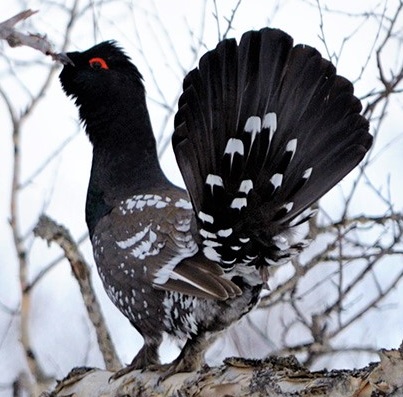Black-Billed Capercaillie
The Black-Billed Capercaillie or the Spotted Capercaillie is a large Grouse species closely related to the more widespread Western Capercaillie. It is a sedentary species which breeds in the boreal forests of eastern Russia as well as parts of northern Mongolia and China. In the far west of its range, the Black-Billed Capercaillie has been known to hybridize with the Western Capercaillie.
The male Black-Billed Capercaillie resembles its western counterpart, except that it’s slightly smaller, with a slightly longer tail, and a shorter horn-colored beak. He also has more black plumage and large white spots at the tips of the upper tail coverts and on the wings. The appearance of the female Black-Billed Capercaillie is similar to that of her western counterpart, except that she is greyer with more uniformly scaled underparts. She also differs in lacking the rusty unmarked breast area, with more noticeable white spots on her wings. There are three subspecies for the Black-Billed Capercaillie that are distributed across its habitat range.
Mating of Black-Billed Capercaillies usually starts in late April. Typically, females lay 5 to 10 eggs in nests built under fallen tree trunks and roots or amidst stones. Black-Billed Capercaillie chicks hatch almost 4 weeks later and the brood usually disperses in September. Most of the young birds remain in the nearby cedar forests and blueberries fields when starting their own journeys.


| Place of origin | Russia, Mongolia and China |
| Use | Preservation |
| Weight | Male: 3350 – 4580 g female: 1700 – 2200 g |
